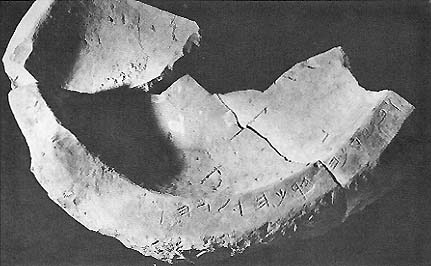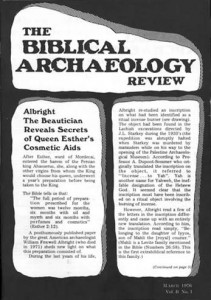Cache of Hebrew and Phoenician Inscriptions Found in the Desert

Over 100 years ago Edward Palmer explored the Sinai desert and recorded his findings in a still fascinating book entitled The Desert of the Exodus. At a site called by the Arabs Kuntillat, Palmer found some architectural remains which he identified as a Roman outpost on the ancient road from Gaza to Eilat. According to Palmer, this was the site known from Roman sources as Gipsaria.
Zeev Meshel of Tel Aviv University’s Institute for Nature Preserve Research visited the site in 1970. As he tells it, five minutes’ inspection of surface sherds at Palmer’s “Gipsaria” was enough to establish that it was not a Roman outpost, but a building dating from the Israelite period. Several years later, Meshel returned to excavate. The full story of the excavation has yet to be told, even in professional journals. But Meshel has revealed some tantalizing tidbits.
Only a single building stood on the site, isolated and alone, on a little hill. The building dates from the 8th century, B.C. What makes the building so unusual is that it contained a spectacular collection of inscriptions. Four inscriptions were found in the building’s central hall written in ink on the glowing white plaster which covered the walls, floors and benches. Other inscriptions were found painted on pottery and carved into stone. Single Hebrew letters were inscribed on leather-hard clay of large storage jars just before firing. All of the inscriptions are in Hebrew, except for three Phoenician inscriptions written on the plaster.
This is the largest collection of 8th century inscriptions ever found at a single site.
Already a library member? Log in here.
Institution user? Log in with your IP address.

